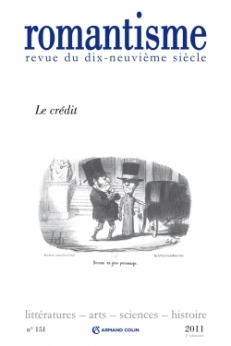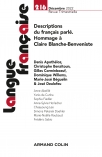
Romantisme n° 151 (1/2011)
Pour acheter ce numéro, contactez-nous
Recevez les numéros de l'année en cours et accédez à l'intégralité des articles en ligne.
Cet article analyse les formes de convergence liant, au XIXe siècle, la presse et le monde de la Bourse. En s’attachant particulièrement au roman de Zola, L’Argent, il montre comment le régime périodique s’impose au monde du crédit, en même temps que la banque opère une mainmise complète sur la direction des principaux titres de presse. La réflexion propose dans un second temps de voir dans le roman zolien une représentation à double détente de cette consanguinité du texte périodique et du crédit – deux univers qui ont en commun leur matérialité (le papier), leur publicité (qui donne sens aux transactions), et leur périodicité (la bourse est en soi périodique). Publié en feuilleton dans un journal fameux pour ses chroniques boursières, L’Argent joue à double titre de la confusion des rôles existant entre le financier, « poète du million », et le romancier, qui fidélise les lecteurs pour le compte des banques.
This article describes the mutual dependence between the press and the world of the stock exchange in the 19th century. Through an analysis of Zola’s novel Money, it shows how the newspaper imposes its law upon the world of credit, and how, at the same time, the bank operates a complete seizure of the management of the main press titles. The analysis proposes to see in the Zolian novel a complex representation of this consanguinity of the serialized text and of credit – two universes which share three main characteristics : materiality (use of paper), publicity (which makes deals efficient), and periodicity (as the stock exchange’s activity is periodic too). Published in serial form in a newspaper famous for its reports on the stock exchange, Money develops on two accounts the confusion of the roles which link the financier, “poet of the million”, and the novelist, whose contribution is to make the readers loyal to the banks owning the title.

